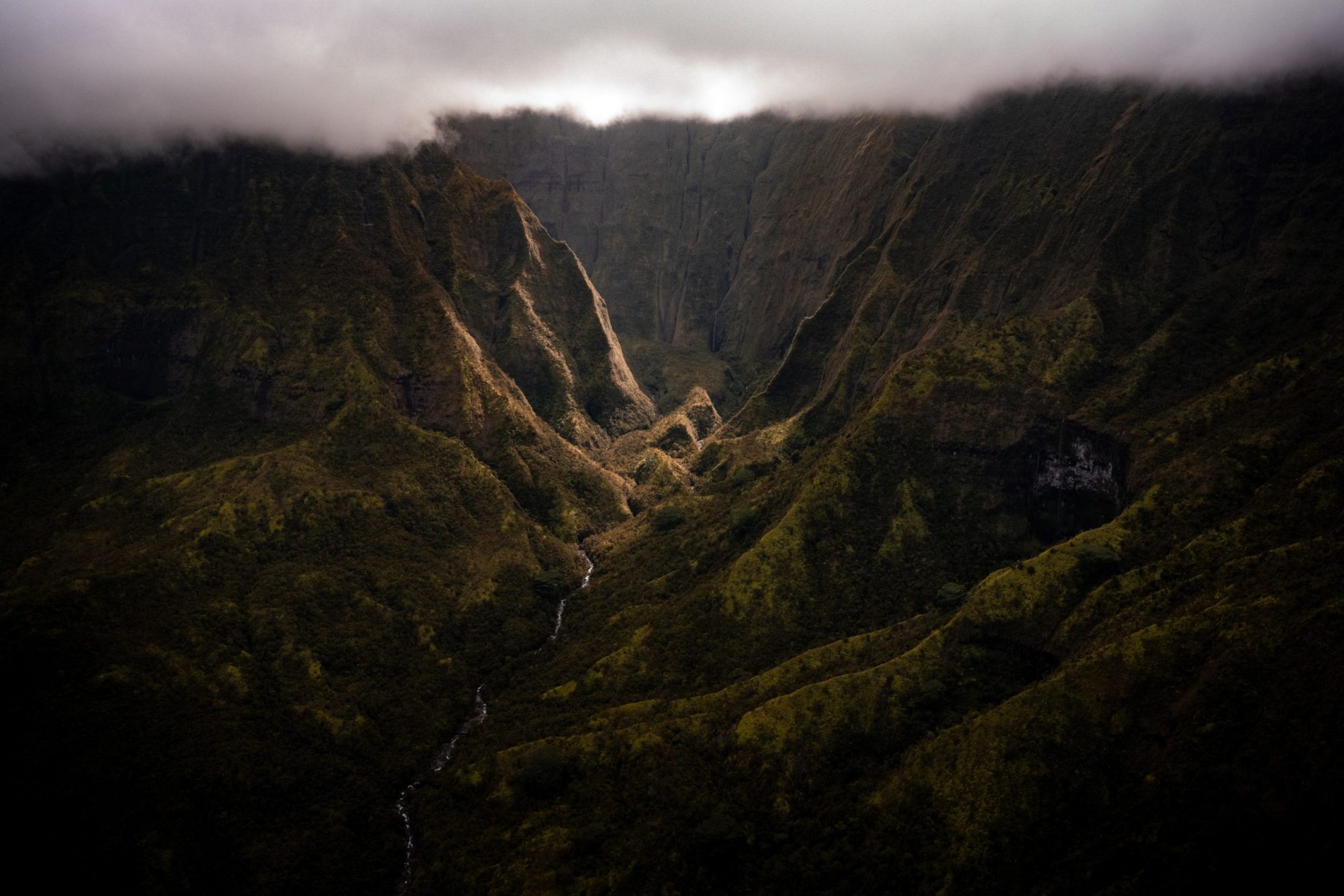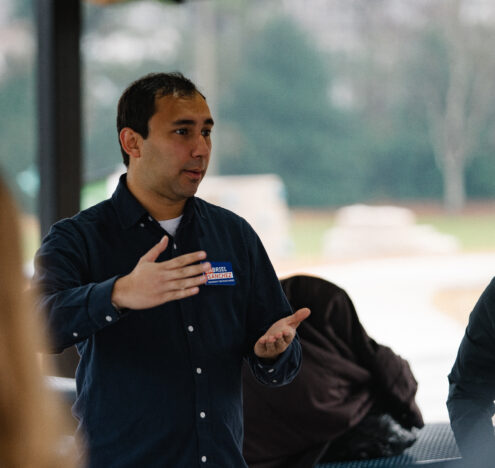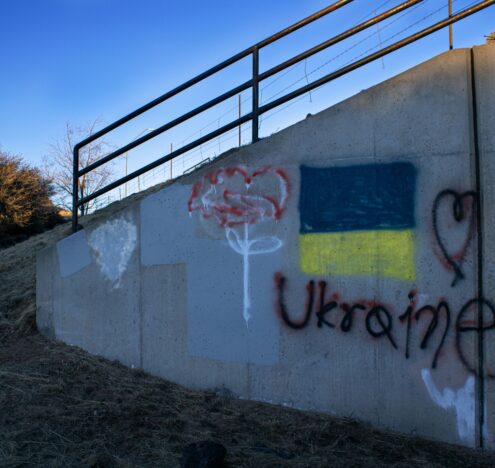A sprawling residential development pushes up against an expanse of dense, green forest.
We hear a voice speaking over the lush images: “Our nation is only getting more crowded. There’s more competition and more pressure on resources. These bases and ranges that used to be out in the middle of nowhere, really aren’t any more. Civilization is expanding and getting closer and closer to these installations. If we don’t care for the land, if we don’t treat it right, then we will lose the training mission.”
That’s the voice of Lt. Col. Buck MacLaughlin of Avon Park Air Force Range in south central Florida speaking in a promotional video for the Sentinel Landscapes Partnership, a collaboration between the US Departments of Defense (DOD), Interior (DOI), and Agriculture (USDA) with state and local governments, NGOs, and private landowners. The partnership was established in 2013 in order to “strengthen military readiness, preserve natural resources, protect critical habitat, and enhance America’s working lands.”
Central to the partnership is the designation of vast natural areas as easements to ensure forests, grasslands, and other undeveloped wilderness is not eaten up by commercial, residential, or other development. At the same time, sentinel landscapes create a buffer around military installations where testing and training occurs. Supporters of the partnership see it as a way to enhance existing conservation and land management efforts while bolstering the military mission. Critics, however, worry about employing the DOD — an agency predicated on war fighting — to serve as an environmental steward given its record of pollution and destruction.
Currently there are seven sentinel landscapes with more than 2.7 million acres surrounding military installations in Washington, Arizona, Minnesota, Georgia, North Carolina, Florida, and Maryland. The partnership follows other DOD initiatives like the Army Compatible Use Buffer (ACUB) program and the Readiness and Environmental Protection Integration (REPI) program established to “combat encroachment that can limit or restrict military training, testing, and operations.” REPI’s primary purpose is to “remove or avoid land-use conflicts near installations and address regulatory restrictions that inhibit military activities” in some of the wildest, most rugged, pristine parts of the country.
IS HAWAII NEXT?
As the Sentinel Landscapes Partnership prepares to expand, with an announcement possible by the end of the year, Hawaii, one of the most military-dependent in the nation, is making a bid to be the next sentinel landscape. If successful, the entire islands of Hawaii (Big Island), Kauai, and all of Oahu outside urban areas, would be designated as a sentinel landscape. Hawaii’s bid is being spearheaded by The Trust for Public Land (TPL) Hawaiian Islands program, which has partnered with the military on other projects.
TPL Hawaii director Lea Hong explained that despite the “militaristic-sounding” name, the program is not new. Instead it takes existing conservation and climate resiliency efforts under DOD, DOI, and USDA to provide “bonus points,” giving sentinel landscapes greater opportunities to receive federal funding. Hong points to the REPI buffer program that she says has been very successful on Oahu, home to more than a dozen military installations including US Indo-Pacific Command headquarters and Joint Base Pearl Harbor-Hickam.
On a planning map showing REPI projects, military bases and leased lands, Oahu appears as a patchwork of purple, green, grey, and pink, indicating military-funded conservation projects from Pupukea-Paumalu to Turtle Bay Mauka Agricultural Lands and MAʻO Organic Farm. According to TPL, Hawaii’s designation as a sentinel landscape, would “supercharge” collaborative conservation partnerships in the islands while strengthening military readiness.
Hong, who grew up in the central Oahu town of Wahiawa beside Schofield Barracks, understands the impacts of military testing and training. She recalls how her whole house used to shake when the helicopters flew too low but shrugs it off saying, “That’s part of living in Wahiawa, right?” Now, with the influx of new residents to Hawaii, many of whom are buying multi-million dollar homes, comes opposition to the noise of helicopters and night training. Buffer zones can reduce complaints, allowing the military to train unhindered, which Hong says is helpful for national security because “war happens at night and you kind of have to train under all kinds of conditions.”
Today there is virtually no public awareness of Hawaii’s sentinel landscapes bid but Hong says she isn’t worried about the lack of public comment period because “these existing programs all have done a ton of community outreach.” Even if Hawaii is designated as a sentinel landscape, most people won’t notice anything, although Hong says, “they might notice that there is more federal funding flowing into Hawaii for conservation and climate resiliency.”
Likening the program to a lottery, Hong stresses that participation is voluntary, noting that those opposed to the military or endangered species are not obliged to apply for funding.
SUPPORTING THE MISSION
The US Indo-Pacific Command’s Hawaii Military Land Use Master Plan published in April warns that “current zoning laws, zoning classifications, and air space regulations do not provide a sufficient buffer to permit the full range of military activities from perimeter to perimeter.” It points to the Sentinel Landscapes Partnership, ACUB, REPI, and the Navy and the Marine Corps Encroachment Partnering Program as “potential mechanisms for attaining buffers, land use zoning changes, and participation of various impacted stakeholders.”
The plan concludes that “partnering opportunities with government agencies to promote compatible civilian development in support of the long-term sustainability of operability of military installations will be critical.”
Hawaii’s sentinel landscapes bid also has the support of its four-person congressional delegation. Senator Mazie Hirono (D-HI) made a public pitch to Secretary of Interior Deb Haaland during an Energy and Natural Resources Committee hearing in July where she said, “A sentinel landscape designation in Hawaii could bring additional federal resources to strengthen military readiness in the Indo-Pacific, conserve natural resources, bolster agricultural and forest economics, mitigate wildfire, and increase climate change resilience.”
Locally, state senator Mike Gabbard, chair of Hawaii’s Senate Committee on Agriculture and the Environment, wrote in an email that before endorsing the program, he wanted to reach out to environmental and agriculture stakeholders, but he is open to learning of ways to work collaboratively to promote conservation and land restoration.
Others, however, have concerns. Hawaii state representative Amy Perruso describes her central Oahu district as “wrapped” by multiple military installations and training areas. At the height of the pandemic, when restrictions led to military testing being restricted to Oahu, Perruso says she received daily calls from constituents complaining about shaking houses.
On an island where some 20% of the land is held by the military, Perruso worries about mission creep and the military’s environmental record in places like Kahoolawe, Pohakuloa, Makua Valley, and Red Hill. Perruso, who sits on the state’s agriculture, energy, and environment committees, says, “I don’t see [the military] ever as first and foremost good stewards of the land.” Although she supports the work of land trusts and their conservation goals, she says Hawaii shouldn’t rely on the military to do the work the state could be doing. She says, “it’s like being dependent on someone you don’t trust.”
In Hawaii, ongoing criticism of the military’s land use includes: Potentially catastrophic fuel leaks; buried and abandoned chemicals, munitions, and toxins; unexploded ordnance; the past use of depleted uranium; mustard gas dumped in the sea; and sarin nerve agents tested on Hawaii Island in the 1960s.
For an institution that has been called “one of the world’s biggest polluters” and one of the greatest single producers of greenhouse gases to present itself as a partner for environmental stewardship, critics say, is to deny reality. They worry that as the US embraces sweepingly broad regional alliances like the Quad (Australia, India, Japan, and US) and AUKUS (Australia, UK, US), Hawaii’s importance as a hub for military testing and training will only grow.
To be sure, this increasingly crowded planet needs all the help it can get. But conflating the primary goals of the military enterprise, with its stated ambition to protect nature, while dismissing the destructive and harmful impacts of maintaining the most costly, most polluting, and most deadly military endeavor the world has ever seen, is to admire the raptor’s downy plumage, while ignoring its deadly talons.
Oahu resident and retired Army Col. Ann Wright supports land preservation and wants open land protected from development because, she says, “we’re certainly maxed out on Oahu.” But she also worries about the future possibility of land designated as a conservation buffer being claimed by the military under the guise of national security.
Dr. Kyle Kajihiro, a geography and ethnic studies lecturer at the University of Hawaii, sees the sentinel landscapes program as problematic in that it’s framed around the assumption that the military takes priority, defining activity on surrounding lands as “encroachment.” Historically, in Hawaii, it is the military that has been the encroacher, Kajihiro says. “They imposed themselves, took lands, and are doing things that are harmful to the environment.” He says sentinel landscapes reflect a trend of co-opting environmental and cultural protection.
Following the establishment of the National Historic Preservation Act (1966) and National Environmental Policy Act (1970), Kajihiro says an industry of cultural and environmental consultation emerged, marking a shift from practicing science for the advancement of knowledge and understanding to instead creating a culture of contractors who produced a product for a customer and, in the process, skewing the science and enabling the paying client (military) to wield greater control over the production of that knowledge. The result, he says, is a system that rewards those who produce results favorable for the client and are more likely to be awarded future contracts. Kajihiro is concerned that ecologically fragile or environmentally valuable areas will be used as trading pawns to excuse damage being done elsewhere.
“These environmental programs, as good as they are in and of themselves,” Kajihiro says, “support destruction of other resources and continue that dispossession and violence.” He argues there is no way to spin live-fire training, military ground maneuvers, and accidental fires, as “good for the environment.”
Kajihiro says it can be problematic when conservation groups become reliant on collaborating with the military to gain financial support as it can lead to a stifling of criticism or outright support for military projects regardless of potential deleterious environmental impacts. He points to Pupukea-Paumalu during the expansion of the Stryker Brigade. He says at the time it bought complicity, calling funding a way to neutralize any potential resistance. “That’s the part that doesn’t get talked about. Okay, we’re protecting this in order to do what?”
To compromise on or overlook gross environmental harm in the name of financial gain is to undermine the noble environmental protection values some groups espouse, Kajihiro says. “There’s a contradiction, right?”
From a safety standpoint, the idea of a buffer between military installations and populated areas makes sense. Military aviation noise and crashes in or near residential districts in Hawaii, California, and Texas underscore the importance of keeping military activities away from the public.
A BIGGER THREAT THAN BOMBS
Lenny Siegel, executive director of the Center for Public Environmental Oversight, has advocated for buffer zones around military installations for two decades. He says that in general buffers are a good thing but there needs to be public involvement. He points to the military’s historical role in protecting wild habitat, even when it was unintentional.
“It turns out that people are more of a threat to wildlife than bombs,” says Siegel, talking about the effectiveness of preserving species outside military bases. He acknowledges there are many quarters in the military which place great importance on environmental conservation, but isn’t without skepticism, saying, “sometimes the military just wants to take credit for preserving habitat while next door they’re releasing hazardous substances into the environment.”
He points out that US environmental laws are such that they require the military to mitigate harmful impacts of their actions and so when they’re asked to play an active role in doing so, their efforts should be welcomed.
“It’s a good thing for these agencies to partner with the military. But that doesn’t mean that everything they’re doing under these programs is something I would necessarily support.” He points to collaborative DOD environmental research programs that address environmental problems for the military as a force for good. “Just because you don’t like what the military is doing overall,” Siegel says, “doesn’t mean they can’t do some good things.”
Key to the success of hybrid military-conservation programs, Siegel believes, is an informed public and community engagement through advisory groups and technical assistance. Ongoing relationships utilizing local expertise, he says, can over time develop trust, even in the absence of agreement.
The Sentinel Landscapes Federal Coordinating Committee and the USDA-NRCS did not answer multiple requests for comment, but this 12-minute video summarizes the program’s goals and priorities.
Now, picture a rancher gazing through binoculars at pronghorn antelope and cattle grazing on open grasslands. “Everything we do is to improve the quality of life here,” she says, “for the wildlife, ourselves, for the cattle and to keep it intact, to keep it protected where it can never be developed.”
We see a series of images, cutting back and forth.
Soldiers decked out in full camouflage move stealthily through the brush, their rifles drawn.
Bear cubs climb on a tree stump.
Trumpeter swans fly low over a winding stretch of the shimmering Mississippi River.
An airman climbs aboard an A-10 Thunderbolt loaded with AIM-9 Sidewinder air-to-air missiles, LAU-131/A 7 shot rocket pods, and AGM-65 Maverick missiles ready to roll.
The size, scope, and commitment by the DOD to create vast buffer zones around sprawling American military installations in order to fully realize testing and training capabilities, while minimizing potential for disruption, disturbance, and domestic conflict is clear. Practicing for war with live-fire ammunition, fighter jets, and other lethal weaponry and equipment is, by its nature, potentially deadly. Putting space between civilians and military activities makes sense.
In the Sentinel Landscapes Partnership, the DOD’s cooperation with DOI, USDA, and other agencies, conservation bodies, and private landowners gives the DOD the ability to contribute to important land conservation, climate resiliency, and other environmental protective initiatives. It also presents the military with an almost immeasurably valuable cloak of legitimacy — that of land steward and environmental defender. In a word, it makes the military all but unassailable.
Saving endangered species is good. Protecting wilderness and open land is important. If the natural world reaps benefits from cooperation between disparate stakeholders, doesn’t everyone win? To be sure, this increasingly crowded planet needs all the help it can get. But conflating the primary goals of the military enterprise, with its stated ambition to protect nature, while dismissing the destructive and harmful impacts of maintaining the most costly, most polluting, and most deadly military endeavor the world has ever seen, is to admire the raptor’s downy plumage, while ignoring its deadly talons.
Jon Letman is a Hawaii-based independent journalist covering people, politics, and the environment in the Asia-Pacific region.




















